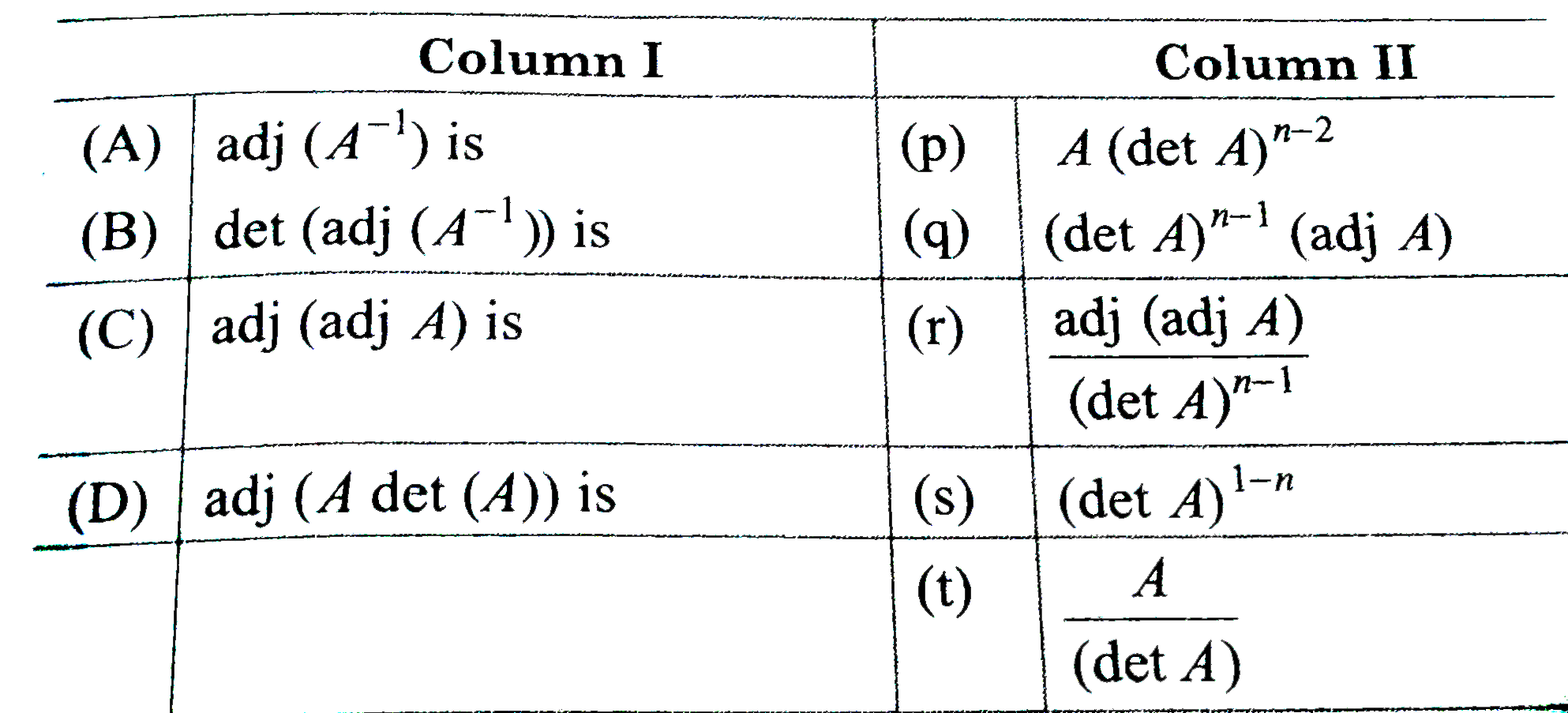If A is a non-singular matrix, prove that: adj (A) is also non-singular (ii) (adj A)−1=1|A|A.
Video Solution
Text Solution
we know that
AadjA=∣A∣I
⇒∣AadjA∣=∣A∣n
⇒∣A∣∣adjA∣=∣A∣n
⇒∣adjA∣=∣A∣∣n−1
Now, A is singular .
∴∣A∣=0
⇒∣adjA∣=0
Hence adj A is singular.
A−1=1det(A)adj(A)
So,
A−1=1detA−1adjA−1
⇒A=1det(A−1)adj(A−1)
⇒det(A−1)A=adj(A−1)
∴1det(A)A=adj(A−1)
|
Topper's Solved these Questions
Similar Questions
Knowledge Check
If A is a non-singular matrix, then
AA−1 is a non-singular matrix, thenBA−1is skew-symmetric if A is symmetricC∣∣A−1∣∣=|A|D∣∣A−1∣∣=|A|−1If A is a non-singular matrix, then A(adj.A)=
Aidentity matrixBnull matrixCscalar matrixDdiagonal matrixIf is a non-singular matrix, then det (A1)=
Adet(A)B1/det(A)C1D0
If A is a non-singular matrix, prove that (adj A)−1=(adj A−1) .
View SolutionIf A is a non-singular matrix, prove that (adjA)−1=(adjA−1)
View SolutionIf A is non-singular matrix of order, n×n,

View SolutionIf A is a non-singular matrix of order n, then A(adjA)=
View SolutionIf A is a non-singular matrix of order 3, then adj(adj(A)) is equal to
View Solution
